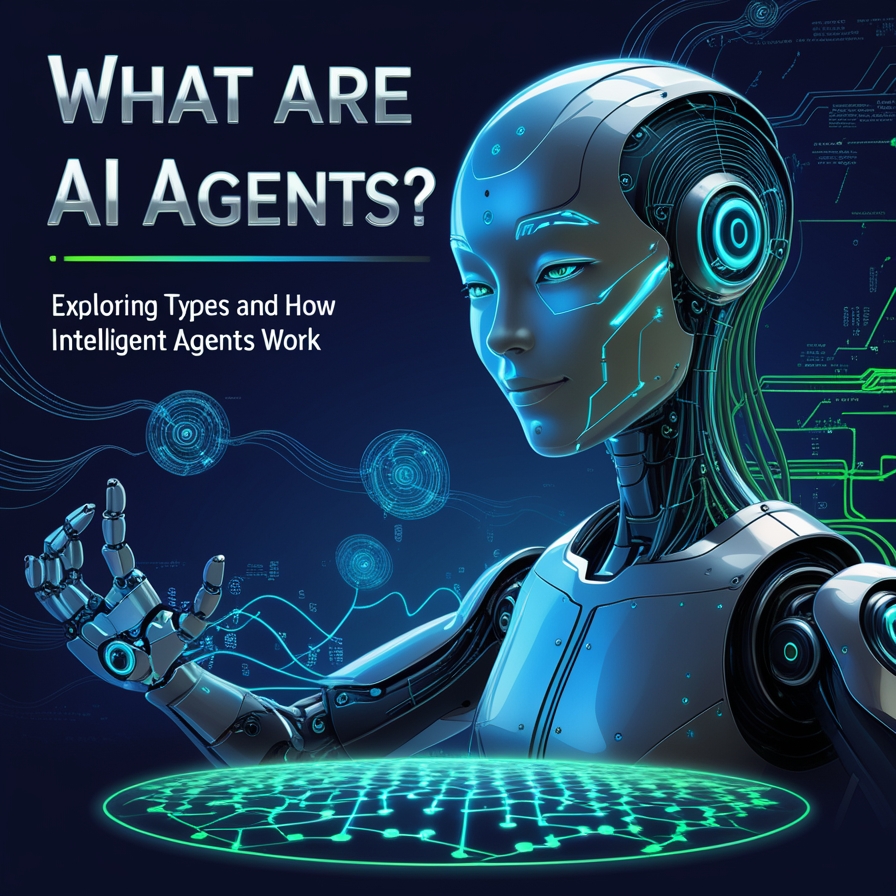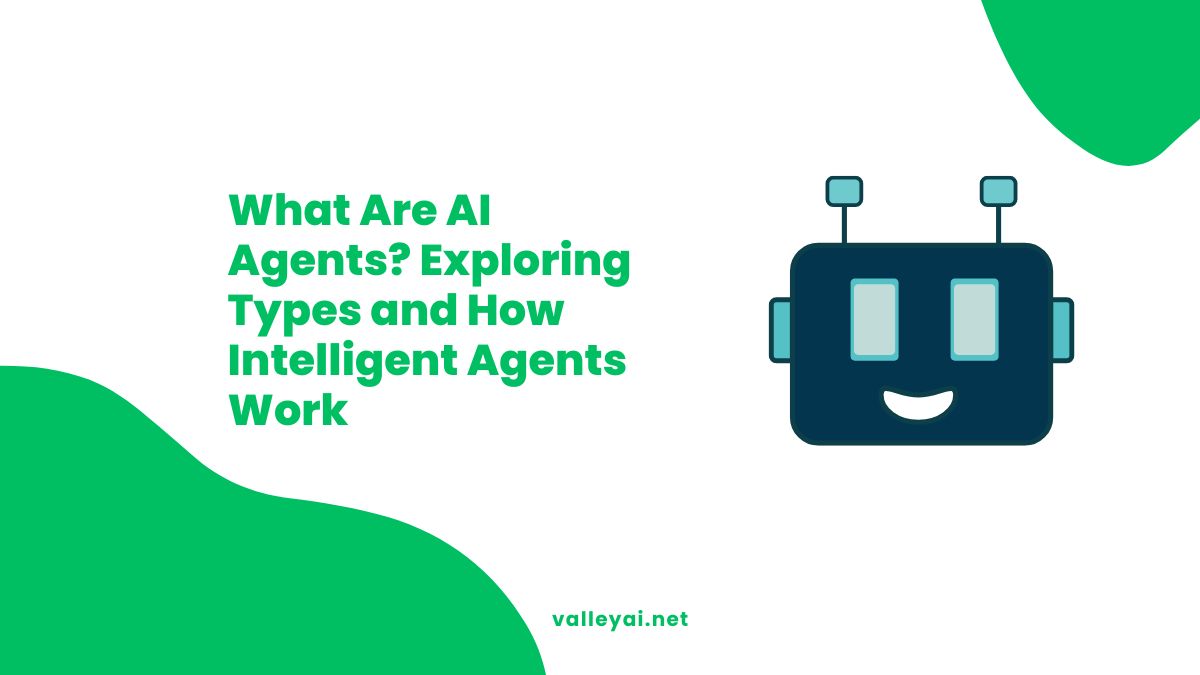AI agents are autonomous systems designed to interpret and respond to customers’ questions using natural language. These intelligent agents function with minimal human intervention, understanding, and interpreting interaction to provide automated assistance and responses. From customer care to sales rep tasks, AI agents can solve problems, offer detailed advice, and support teams in problem-solving with their advanced intelligence.
The possibility of growing AI agents has led to a wide variety of examples in the market today. Companies and CEOs recognize the benefits of generative AI in drawing valuable insights from data, reducing manual gathering and analysis costs, and freeing employees to handle complex issues. These agents can scale teams quickly, providing instant customer care, and enhancing performance by monitoring indicators to solve major problems effectively.
Drawing from science fiction, such as Jarvis from Iron Man, HAL 9000 from 2001, and TARS from Interstellar: A Space Odyssey, modern AI agents like GPT language models strive to understand goals, generate tasks, and automate work. They act as cognitive or robotic coworkers, supporting the human team in everyday activities, from managing the water cooler chats at 10 a.m. to running experiments in the evolving field of AI technology.
What are Artificial Intelligence (AI) agents?
AI agents are software programs designed to interact with their environment, collect data, and perform tasks either self-determined or based on predetermined goals set by humans. These agents can independently choose actions to achieve specific objectives without constant human intervention.
For example, a contact center agent can resolve customer queries by automatically asking questions, looking for information in internal documents, and providing appropriate responses or solutions.
How AI agents work?
Various AI agents, including those based on large language models (LLMs) like ChatGPT. Traditional agents, such as those developed by IBM with their Granite platform, rely on bounded knowledge and reasoning, often facing limitations in handling complex tasks. In contrast, agentic technology serves as a tool that can optimize the backend of systems, streamline workflows, and create subtasks to manage autonomously complex processes. These agents can adapt to user expectations, saving time by leveraging their ability to store past interactions and memory to plan for the future, thereby offering a personalized experience.
AI agents broaden the possibilities in real-world applications by integrating with various systems to handle inquiries. Platforms like Agentforce enable builders to create sophisticated agents that utilize machine learning and natural language processing (NLP) to handle a wide range of tasks, from intelligent answering of simple questions to resolving intricate issues. Their multi-tasking capabilities can improve performance through self-learning, requiring input from specific entities to act based on their surroundings and make informed decisions that transform circumstances in both physical and digital realms.
Advanced AI agents learn and update their behavior by analyzing solutions to problems encountered in the real world. This includes integration with robots, automated drones, self-driving cars, and other software-based computers. The aspect and components of these agents’ interfaces can vary widely depending on how they work.
For instance, a chatbot like ChatGPT responds to prompts and instructions, aiming to meet its objective when a stimulus or trigger is received. The complexity of their processors allows them to solve actions that bridge the gap between rules and feedback, adding additional points to enhance their flexible and versatile nature. However, like all programs, they can be unpredictable, sometimes facing issues with accuracy and mistakes as they figure out ways to move forward.
AI agent different Components
AI agents are designed to simplify and automating complex tasks by breaking them into manageable steps. These autonomous agents adapt to a specific workflow, performing assigned tasks efficiently. They can operate seamlessly using different components, like a body and software with advanced capabilities. Let’s see a breakdown of actions.
Determine goals, Perception, and data collection, Sensors:
AI agents gather percepts from their surroundings using sensors like cameras, microphones, and antennae to sense the world. They integrate this with up-to-date information from web searches, customer transaction histories, and social media. By understanding context and nuances, the agent creates a plan to achieve goals, breaking tasks into smaller, actionable steps. This process handles inquiries and delivers useful outcomes, whether through advanced software or tools like reading PDF files.
Implement tasks and action execution:
An AI agent methodically implements tasks, using decision-making mechanisms as its brain to execute required actions. It processes requests, answers customer queries, and even escalates complex issues to humans if needed. By evaluating completions, inspecting logs, and using external feedback, ensures seamless execution. This efficient process delivers timely, accurate responses, accomplishing each designated goal before it proceeds to the next task on the list.
Learning and adaptation:
AI agents excel in learning and adaptation by continuously refining algorithms through interactions. They update their knowledge base with feedback, storing data about past perceptions, difficulties encountered, and solutions found. This continuous capability helps them improve accuracy and effectiveness, ensuring they remain relevant to customer expectations and evolving business environments. By leveraging a database of facts, they seamlessly adapt to change and efficiently complete tasks.
What are the types of AI agents?

AI agents have varying levels of capabilities, ranging from simple agents with straightforward goals to advanced ones managing complex tasks. These intelligent agents are categorized into 6 main types, each designed to suit specific industries and real-world applications. Their choice depends on the components, complexity, and how they can help a business effectively.
Basic Reflex Agents
Simple reflex agents are the simplest form of intelligent agents. They operate strictly based on predefined rules that map conditions to actions. These agents react to immediate data from their perceptions without holding any memory of past events.
From my experience working with reflex agents, I’ve seen how they are effective in suitable tasks that require quick and direct responses without the need for extensive training. However, their limits become evident in complex environments where deep understanding and the ability to interact with other agents are necessary.
These agents can only handle scenarios they are prepared for, often missing out on nuances when encountering missing information or unexpected events. Despite these limits, they are widely used in industry for straightforward actions, such as automated signal processing in manufacturing lines.
Example of Simple reflex agents
For instance, a chatbot designed for customer support uses sensors to detect stimuli and interpret signals, enabling it to respond appropriately when specific conditions are met. This condition-action principle allows the agent to perform preprogrammed actions effectively in fully observable environments where all necessary information is available.
Advanced Model-Based Agents
Model-based agents are similar to reflex agents but more advanced in their decision-making mechanism. Unlike simple reflex agents that rely on predefined rules, model-based agents build an internal model of the world using data from their perceptions.
This model helps them evaluate probable outcomes and consequences, allowing them to make more informed decisions. By maintaining a memory of the current state and previous perceptions, these agents can respond to changing and partially observable environments. For example, a self-driving car uses sensors to gather information about its surroundings, forecasting potential obstacles and deciding the best actions for parking or navigating through traffic.
In my experience working with model-based agents, I’ve found them to be highly effective in complex environments where understanding the context is crucial. These autonomous agents can actively gather and store information, allowing them to adapt to new scenarios and fill gaps when information is missing.
Example Model-based reflex agents
For instance, in a warehouse setting, an inventory management system can interact with other agents to optimize stock levels based on forecasting needs. However, the limited set of rules they follow means that in highly unpredictable situations, their actions may not always be appropriate. Despite this, model-based agents remain a cornerstone in industries that require agile and intelligent decision-making.
Goal-Oriented Agents
Goal-based agents in AI are more robust than reflex- or model-based agents because they use reasoning and capabilities to evaluate their environment and make decisions. Unlike rule-based agents that follow predefined rules, goal-based agents have specific goals they aim to achieve. They use an internal model of the world to plan and search for the most efficient path to reach their desired outcome.
From my experience working with goal-based agents, their effectiveness shines in applications like natural language processing (NLP) and robotics, where understanding the context and navigating various scenarios is crucial. These agents can autonomously respond to changes in their environment to gather data and adjust their strategy accordingly. In games like chess, goal-based agents work by planning several steps, sometimes even defeating human masters. They utilize tools tailored to specific tasks, enabling them to solve problems efficiently and adapt to changing conditions.
Example Goal-based agents
For example, in robotics, a goal-based agent might plan a sequence of actions to navigate a complex maze or perform a specific task like assembling a product. These agents can compare different approaches and consider the consequences of each decision, making them highly effective in complex tasks that require planning and problem-solving.
Utility-Focused Agents
Utility-based agents use complex reasoning and algorithms to maximize the outcome based on the users’ desire. Unlike other agents that follow fixed rules, these agents compare different scenarios and assign utility values to each option. By evaluating the benefits and rewards, they help customers make informed decisions.
In my experience working with utility-based agents, their ability to handle multiple solutions to a problem is impressive. In applications like booking flights, the agent can brainstorm various outcomes and decisions to find the safest and quickest route. These agents consider circumstances and requirements, using a computational approach to manage the complexity of different scenarios.
Example Utility-based agents
For example, when searching for flight tickets, a utility-based agent can select the optimal sequence of actions to reach the best goal, such as finding the lowest price or the shortest traveling time. These agents assign a utility metric to each option, measuring its usefulness and ensuring that the chosen action makes the users happy by meeting their criteria and factors like time and price.
For instance, in an autonomous car, a utility-based agent selects the optimal route by evaluating factors such as traffic, weather, and road conditions to ensure the safest and quickest journey.
Adaptive Learning Agents
Learning agents are a unique type of AI agent that continuously learns from previous experiences to improve their results. They use sensory input and feedback mechanisms to adapt to new environments. The learning element allows these agents to evolve over time, meeting specific standards through their design. Tasks such as training on collected data and analyzing past results enhance their capabilities.
There are different types of learning agents, each with a unique ability to expand their knowledge base. These agents can autonomously operate in unfamiliar environments using reinforcement learning to become more agile. In industries like business and virtual assistant services, learning agents adapt to trends and customer requirements, understanding wants through their surroundings.
Their behavior is shaped by tests and their ability to explore the world, enhancing their performance. Decisions and actions are learned through an internal critic that compares different actions and assesses their impact, effectively preventing issues like spam from reaching the landing inbox.
From my testing working with learning agents, their ability to solve complex problems is remarkable.
Example of Learning agents
For example, in virtual assistant services, these agents train on vast amounts of data to understand and respond to customer requirements efficiently. By exploring various scenarios and receiving feedback, they adapt their behavior to better meet user wants. In robotics, learning agents autonomously navigate unfamiliar environments, using reinforcement learning to optimize their actions.
This agile approach allows them to stay updated with business trends and continuously improve their performance, making them indispensable in today’s fast-paced technological landscape.
Structured Hierarchical Agents
Hierarchical agents are an organized group of intelligent agents structured in tiers where higher-level agents deconstruct complex tasks into smaller ones and assign them to lower-level agents. These lower-level agents operate independently, providing a progress report to the supervising agent.
The supervising agent coordinates the efforts of subordinate agents to achieve goals within a hierarchical structure. It programs and directs the work towards a common goal, often seen in businesses where they break down multi-step processes into simpler tasks. Each agent can focus on a set of responsibilities, ensuring efficient management and execution.
Ending Note On A New Era with AI Agents
An autonomous agent can learn and adapt to user expectations over time by using its memory to store past interactions and plan future actions. For business owners, the adoption of AI agents is a significant turning point. These systems excel at automating tasks that once required predefined input from human users, as they now perform and learn with minimal intervention. It’s hard to grasp all the possibilities and implications, but one thing is certain—both life and work will be transformed in the process.
With personalized experiences and comprehensive responses, AI capabilities allow it to handle a wide range of tasks autonomously, from product recommendations and troubleshooting problems to engaging interactions.
This frees human focus for complex, value-added activities. Whether it’s a smart thermostat with basic sensors or a self-driving car that can see the road, navigate challenging cities, and change lanes, such agents combine decision-making components to efficiently carry out tasks.
Admin
My name is Kaleem and i am a computer science graduate with 5+ years of experience in AI tools, tech, and web innovation. I founded ValleyAI.net to simplify AI, internet, and computer topics while curating high-quality tools from leading innovators. My clear, hands-on content is trusted by 5K+ monthly readers worldwide.

